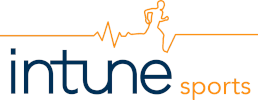|
In Part 1 of the series on Essential tips for international competition I covered everything you need to know regarding choosing your travel and accommodation, through to recommending you learn some of the local social etiquettes and laws at your race venue. In Part 2 here, I’ll provide you with some great tips on how to individualise your training specifically for your event to ensure you’re race-tuned and ready to perform at your peak.
My first tip is to do some simple research on the event demands. This should include determining the course profile, terrain, expected weather conditions and what your predicted finish time might be. Once you’ve analysed the course profile, if you notice it’s substantially different to what you’d commonly encounter in local races or training (eg. has longer or steeper ascents, is likely to leave you out on course far longer etc), it’s likely you’ll benefit from some key targeted training sessions in your lead up. For example, if the course includes some significant climbs, I recommend regularly including some simulated race efforts on a local ascent that has a similar gradient or length to what you’ll encounter in your race during your final 6-8 weeks of preparation. For cycling events, you might even be able to pre-ride the exact event course at a local virtual cycling studio. For those competing off the beaten track, knowing the course terrain you’ll tackle will provide vital information towards ensuring you optimise your equipment selection including bike, tyre or shoe choice. Further, different terrains may require you to learn an additional skill set such as being able to rock-hop over obstacles on a mountain bike or having the lower limb strength to sustain a consistent pace during a sand run. For each of these scenarios, practice makes perfect so time on task is advised. Although weather can be highly unpredictable and you won’t know until race day the exact conditions, you can usually determine if the weather is likely to be hot and humid, or perhaps cold and rainy due to seasonal averages as well as looking at the conditions of past events. If the race is likely to be in held neutral conditions (eg. 20°C) this is less of a concern, but for those racing in places such as Hawaii or throughout Asia where the conditions are often intense with severe heat and humidity, acclimation training is advised. For hot and humid conditions, I recommend performing at least 10-14 days of specific heat acclimation training during the preceding 2-3 weeks to competition. This may be achieved simply through arriving at the race venue early, by attending a local sports performance centre offering heat acclimation services, or creating your own hotbox at home. A recommended method is to perform regular 45 – 60 min training sessions between 35-40°C and 60-80% humidity. As the heat and humidity will add significant intensity to the training sessions alone, these acclimation sessions can be performed at a relatively low intensity which will allow your body to physiologically adjust to the change in climate without over stressing the rest of your body. On the other end of the spectrum, if the race is likely to be cold and/or wet, this is often far easier to prepare for from a physiologically standpoint and may only require the planning of correct race attire which might include the use of a wetsuit, arm warmers, gloves, gilet or jackets etc. However, if you’re event has specific equipment regulations (such as swimming the English channel where water temperature is often <16°C water and wetsuits are not permitted), applying a covering of petroleum jelly to any parts of the exposed body and aiming to increase your body fat percentage may also be required. Stay tuned for the final part of the series where I’ll cover tips when packing your bags and how to minimise the stress placed on your body and immune system from long-haul flying.
6 Comments
|
AuthorBrodie Gardner has a Masters in Exercise Physiology, Honours in Sports Science and competes as a professional triathlete. He has a long history working with elite athletes and has provided consultation services to numerous Australian sporting associations. Archives
January 2021
Categories |

 RSS Feed
RSS Feed